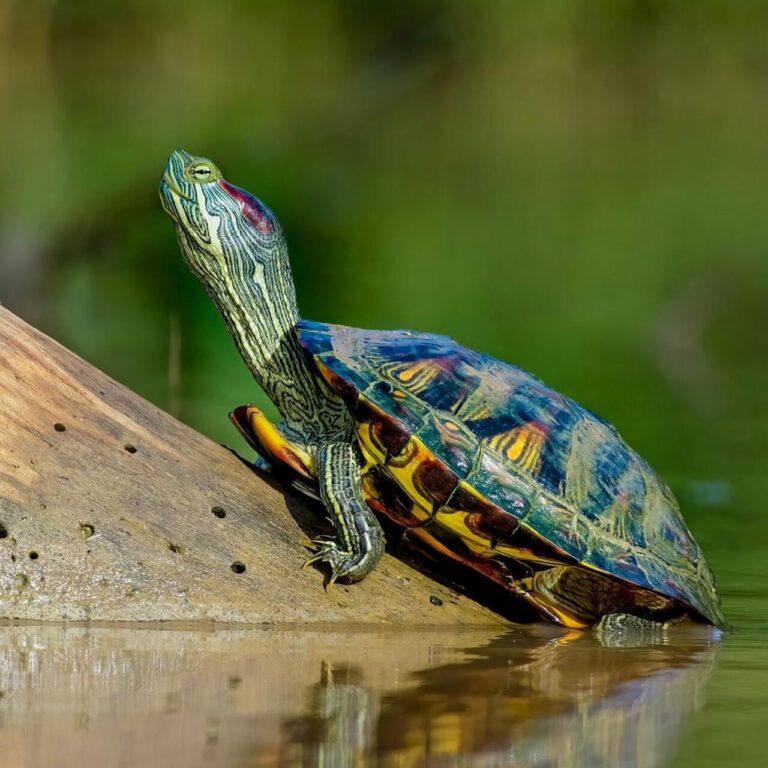Introduction
Snapping turtles, those prehistoric-looking reptiles with powerful jaws, have intrigued wildlife enthusiasts for generations. But to truly appreciate these remarkable creatures, one must understand their habitat and range. In this article, we’ll explore the specific environments snapping turtles call home, their distribution across North America, and some uncommon insights into their habitat requirements.
The Remarkable Adaptability of Snapping Turtles
Before we delve into the specifics, it’s crucial to appreciate the adaptability of snapping turtles, which has allowed them to thrive in a variety of environments.
Key Characteristics:

- Semi-Aquatic: Snapping turtles are semi-aquatic reptiles, meaning they spend a significant portion of their lives in water but also venture onto land, especially for nesting.
- Omnivorous Diet: Their diet is diverse, encompassing aquatic plants, insects, fish, amphibians, and even carrion. This adaptability in their diet contributes to their survival in different habitats.
- Cautious Nature: Snapping turtles are known for their elusive behavior, often lurking beneath the water’s surface, making them challenging to spot.
Freshwater Habitats
Snapping turtles are primarily associated with freshwater habitats, and they have a significant presence in various aquatic ecosystems across North America.
Ponds and Lakes
Habitat Characteristics:
- Ponds and lakes provide ample water resources for snapping turtles.
- These environments often have submerged vegetation, which serves as a food source and hiding spots for the turtles.
Distribution:
- Snapping turtles are commonly found in ponds and lakes across North America.
- They are often observed basking on rocks or logs in these calm waters.
Rivers and Streams
Habitat Characteristics:
- Snapping turtles inhabit slow-moving or calm sections of rivers and streams.
- Here, they benefit from the availability of fish, amphibians, and other aquatic prey.
Distribution:
- Snapping turtles have a broad distribution in river systems throughout their range.
- They are particularly adept at concealing themselves along riverbanks and in underwater crevices.
Marshes and Swamps
Habitat Characteristics:
- Marshes and swamps provide snapping turtles with a combination of water and abundant vegetation.
- These areas are rich in prey and offer ideal nesting locations.
Distribution:
- Snapping turtles are often found in the wetlands and swamps of North America, especially in the eastern part of the continent.
- The vegetation in marshes and swamps also helps protect their eggs from predators.
Terrestrial Habitats
While snapping turtles are primarily associated with aquatic environments, they do venture onto land for specific activities.
Nesting Sites
Habitat Characteristics:
- Snapping turtles require sandy or loose soil for nesting.
- They select areas close to their aquatic habitat, ensuring easy access for the hatchlings.
Distribution:
- Snapping turtles can be found nesting in the vicinity of the water bodies they inhabit.
- Nesting typically occurs during the warmer months, and females may travel significant distances to find suitable nesting sites.
Basking Areas
Habitat Characteristics:
- Snapping turtles are ectothermic, meaning they rely on external heat sources to regulate their body temperature.
- They bask in the sun on rocks, logs, or other elevated areas, particularly during the morning.
Distribution:
- Basking sites can be found near their aquatic habitats.
- Observing snapping turtles basking is a unique opportunity to see these often reclusive creatures.
Uncommon Insights into Snapping Turtle Habitat
Temperature Tolerance
Snapping turtles exhibit a fascinating adaptation to varying water temperatures. They can survive in cold water by slowing down their metabolic rate. This ability allows them to inhabit northern regions where other turtle species may struggle.
Seasonal Migration
In some areas, snapping turtles engage in seasonal migrations, moving between different bodies of water. They may seek deeper water during hot summer months and move to shallow areas in the cooler seasons. Understanding these migration patterns can be vital for their conservation.
Urban Resilience
Surprisingly, snapping turtles have shown a degree of resilience in urban environments. They have been found in city ponds, canals, and even roadside ditches. This adaptability to urban settings underscores the need for wildlife corridors and conservation efforts in urban areas.
Conservation Considerations
Preserving snapping turtle habitats is crucial for their survival, especially in the face of habitat loss and other threats. Here are some conservation considerations:
Wetland Protection
Wetlands, including marshes and swamps, are essential to snapping turtles. Protecting these areas from development and pollution is vital for the species.
Nesting Site Preservation
Preserving nesting sites, often close to water bodies, is crucial. This includes minimizing disturbances during nesting seasons and protecting nesting areas from predation.
Road Mortality Mitigation
Roads can pose a significant threat to snapping turtles, particularly when they venture onto land for nesting. Implementing road signs, constructing wildlife underpasses, or even assisting turtles across roads can reduce road mortality.
Habitat Restoration
Efforts to restore degraded habitats, such as riverbanks and wetlands, can have a positive impact on snapping turtle populations.
Public Awareness
Educational programs and public awareness campaigns play a significant role in snapping turtle conservation. Encouraging responsible behavior around their habitats and dispelling misconceptions about these creatures is essential.
Conclusion
Snapping turtles, with their remarkable adaptability to a range of freshwater and terrestrial habitats, are fascinating reptiles. Understanding their habitat and distribution is vital for their conservation. By preserving their wetland homes, protecting nesting sites, and mitigating road mortality, we can ensure that snapping turtles continue to thrive in their natural environments. These ancient and elusive creatures enrich our ecosystems and remind us of the importance of preserving their unique habitats.



